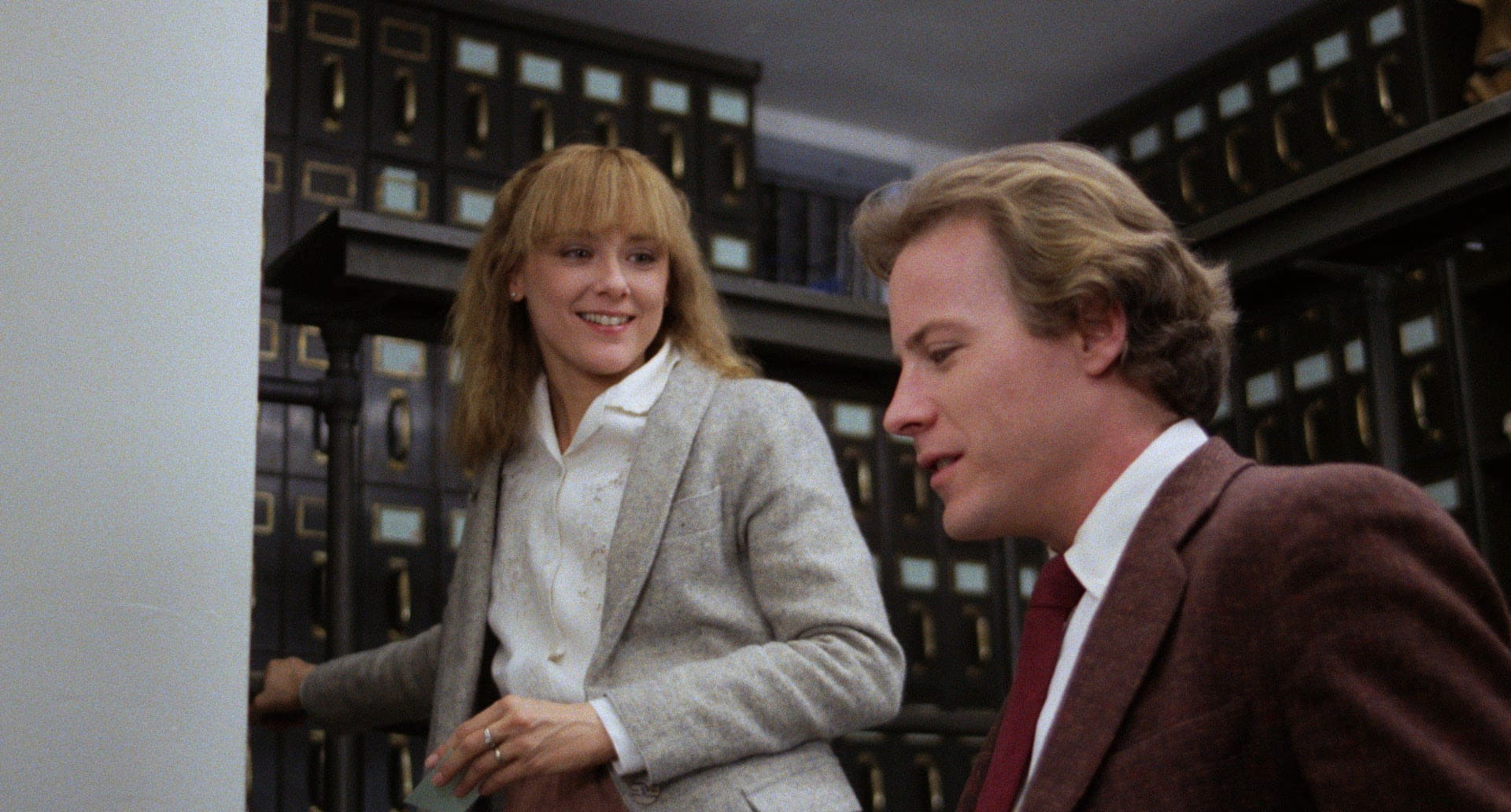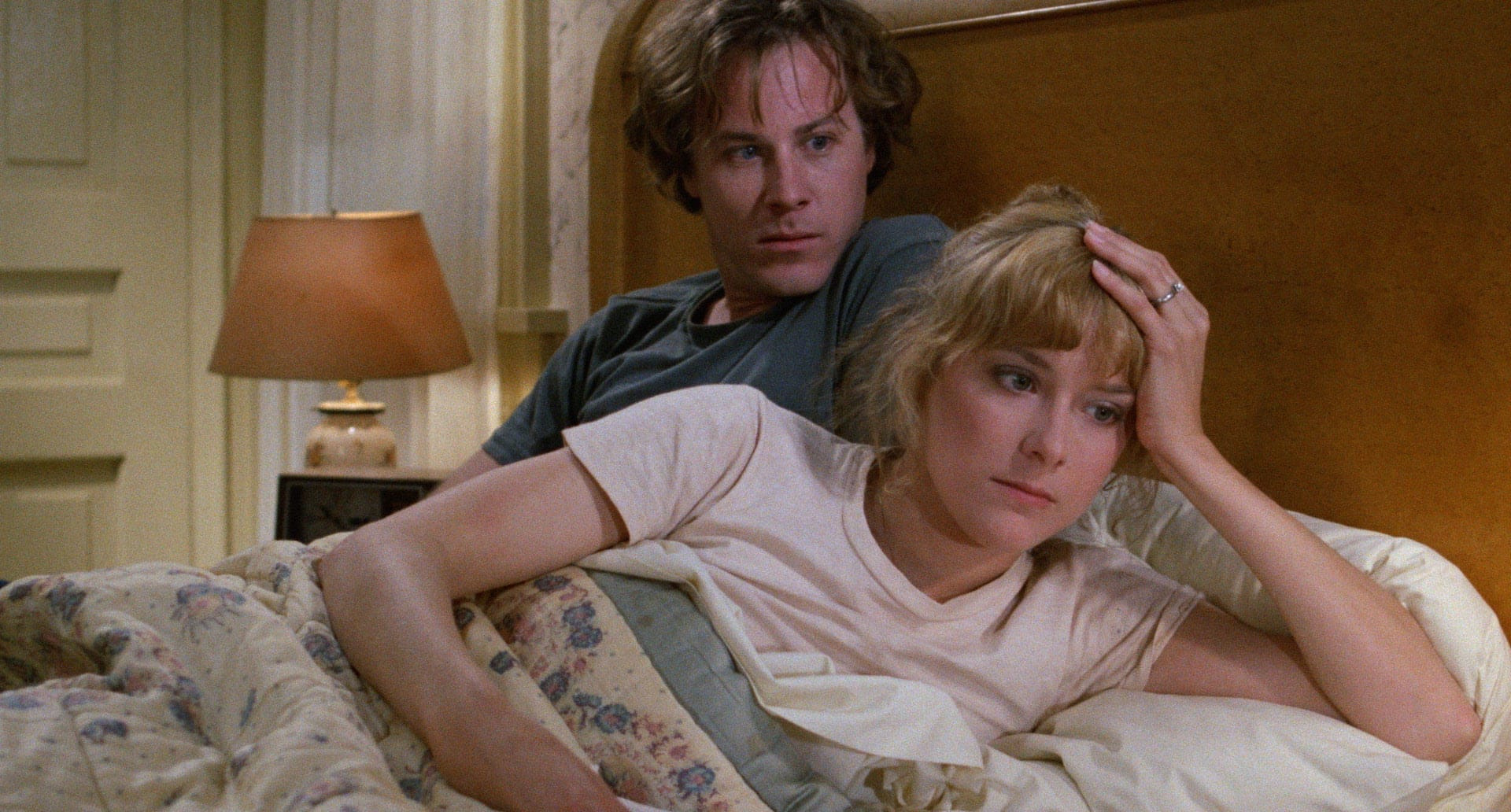Chilly Scenes of Winter: Nowhere Fast

Joan Micklin Silver’s Chilly Scenes of Winter (1979) speaks so pointedly to the current cultural moment that it feels in some ways clairvoyant, despite resting on a historical context that is long gone. I want to say that this is a film about love bombing, about narcissism, about ambiguous consent—and it is—but these contemporary terms also seem insufficient to describe its humor and sadness, its sympathy with and mockery of the idea of romantic love. To use a phrase like love bombing would be to participate in what the film destabilizes: the illusory clarity of pop discourse, and its ill fit with the murkiness and ambivalence of actual relationships, with their extremes and contradictions that seep into the workaday world like the libidinal shriek of Janis Joplin on the snowy Salt Lake City streets where the film’s antihero, Charles, drives around and around.
Chilly Scenes was Micklin Silver’s first studio-backed film, after her success with two independents, Hester Street (1975) and Between the Lines (1977), both produced and distributed by Midwest Films, the company she founded with her husband, Raphael “Ray” Silver. Those films, with their warm depictions of dying worlds—shtetl culture in America in the former case, freewheeling independent journalism in the latter—found unexpectedly wide audiences upon their releases in the seventies, a time when Micklin Silver was a definite anomaly: a woman, a mother of three with no formal film training, making movies that sat outside both the mainstream and the avant-garde, driven more by her affectionate interest in specific material than by any larger careerist plan. Chilly Scenes was another product of that affection: a fan of Ann Beattie’s 1976 novel of the same name, Micklin Silver contacted the three young actors who had, improbably, bought the rights to it—Griffin Dunne, Mark Metcalf, and Amy Robinson (the first two of whom went on to have roles in the film)—and put herself forward to write the screenplay and direct; together, they successfully pitched the project to Twentieth Century-Fox (though the film’s biggest champion there, executive Claire Townsend, took it with her when she left for United Artists). You can see why the studios might have been optimistic about the film’s mainstream appeal: Beattie’s wry depictions of postsixties, wayward twentysomethings broadcast zeitgeist, and at the time she was both critically and commercially popular as a writer; you could imagine a loose, louche version of the novel—with its entropic dialogue, zingy characterizations, and ambiguously happy ending—that would dial down the intensity and turn up the charm. Instead, Micklin Silver takes Charles (played with giddy sarcasm, both self-satisfied and self-reproaching, by John Heard, for whom the filmmaker tailored the role) and his obsession seriously, and her camera stays close to him throughout. We see the world through his ironizing, exasperated eyes; even when he speaks in quotations, we never see the character himself in quotes.








